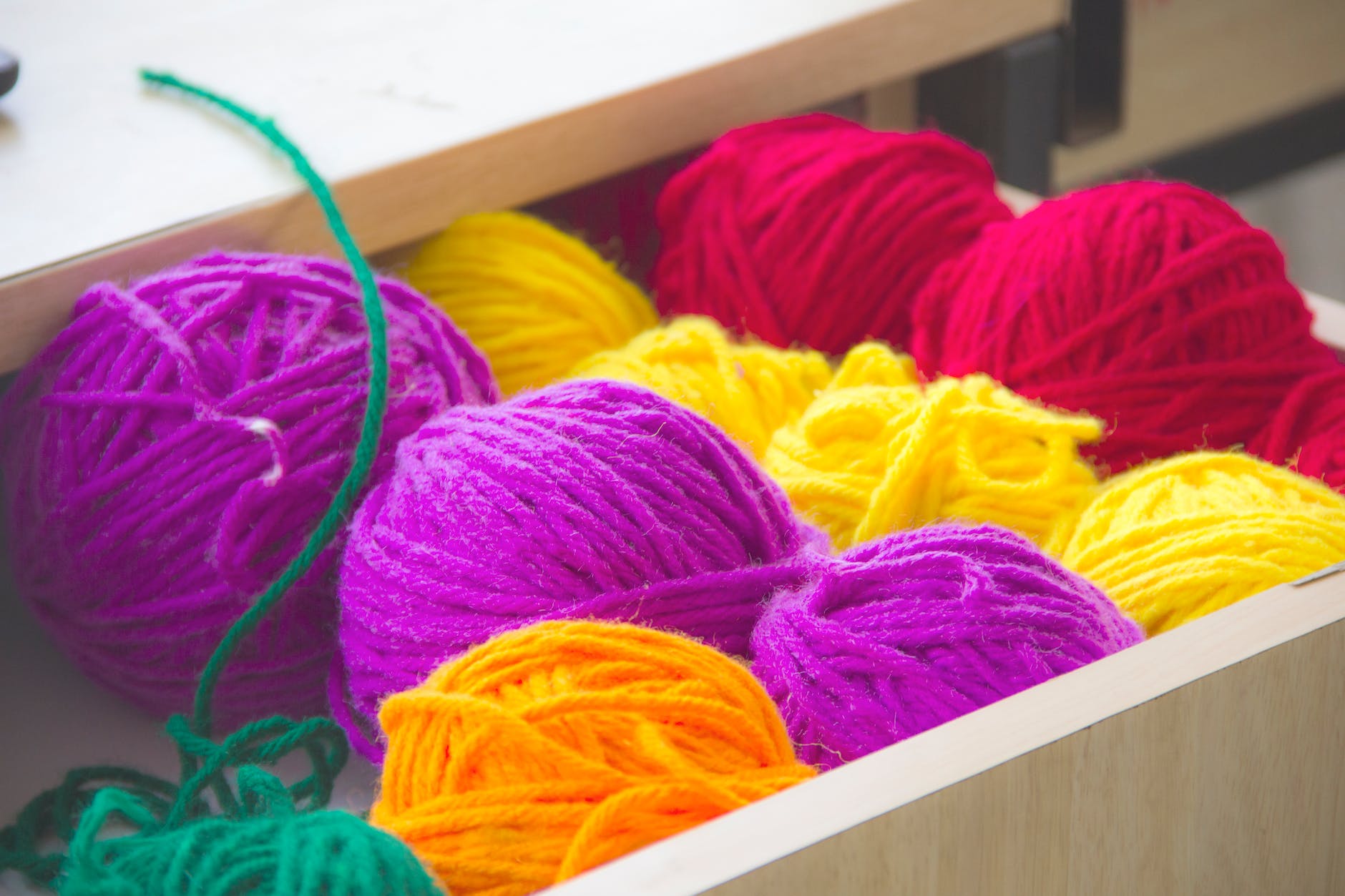knitting yarn: a comprehensive guide to colors, fibers, and thickness
The right yarn can make or break a knitting project. The wrong yarn can be too stiff, too heavy, or too slippery, making it difficult to work with. The right yarn, on the other hand, will be soft, easy to handle, and will create a fabric that is both beautiful and durable.
There are many factors to consider when choosing yarn, including weight, fiber, and color. Yarn weight is measured in a numerical system, with heavier yarns being assigned higher numbers. For example, a worsted weight yarn is a 4, while a bulky weight yarn is an 8. The weight of the yarn will determine the size of the stitches and the drape of the fabric.
Fiber is another important consideration. There are many different types of fibers available, each with its own unique properties. Some popular fibers include wool, acrylic, cotton, and bamboo. Wool is a warm and durable fiber that is perfect for sweaters and other winter garments. Acrylic is a synthetic fiber that is machine washable and easy to care for. Cotton is a lightweight and breathable fiber that is perfect for summer garments. Bamboo is a sustainable fiber that is soft and absorbent.
Color is also an important consideration. When choosing yarn color, it is important to consider the pattern you are using. Some patterns will call for specific colors, while others will give you more freedom to choose. If you are not sure what color to choose, you can always start with a neutral color and then add accents in brighter colors.
Exploring the possibilities of different yarns can be a lot of fun. There are so many different yarns available, each with its own unique properties. By taking the time to explore your options, you can find the perfect yarn for your next knitting project.
Here are some additional tips for choosing yarn:
- Consider the pattern you are using. Some patterns will call for specific yarn weights and fibers.
- Think about the purpose of the project. If you are making a garment, you will need to choose a yarn that is both warm and durable. If you are making a decorative item, you may want to choose a yarn with a more interesting texture or color.
- Consider your personal preferences. Do you prefer soft yarns or hard yarns? Do you like bright colors or muted colors?
With a little bit of research, you can find the perfect yarn for your next knitting project. So what are you waiting for? Start exploring today!
Common Yarn Fibers
Wool – Warm, breathable, durable, and beautiful. Shrinks if agitated. Merino wool is exceptionally soft.
Cotton – Cool, comfortable, and machine washable. Offers great stitch definition. Can lack elasticity.
Acrylic – Budget friendly synthetic mimics wool’s warmth without shrinking. Tends to pill.
Alpaca – Hypoallergenic, warmer than sheep’s wool but still breathable. Drapes well with sheen.
Rayon/Viscose – Affordable sheen that resembles silk. Absorbs dye easily. Drapes well but lacks elasticity.
Bamboo – Eco-friendly fiber is very soft, breathable and absorbent. Antibacterial properties.
Mohair – Shaggy, fuzzy, lustrous yarn from Angora goat hair. Used for fluffy halo. Sheds easily.
Silk – Extremely soft, lightweight, and glossy but very delicate. Requires gentle care.
Linen – Made from flax. Provides coolness and breathability. Can be rough or slubby when handspun.
Cashmere – Rare ultra-luxurious wool known for exceptional softness and warmth. Expensive.
Yarn Weights
Yarn weight indicates thickness as determined by wraps per inch. Categories from lightest/thinnest to heaviest/thickest:
- Lace
- Super Fine
- Fine
- Light Fingering
- Fingering
- Sport
- DK (Double Knitting)
- Worsted
- Aran
- Bulky
- Super Bulky
Match yarn weight to knitting pattern recommendations for proper gauge.
Yarn Texture
Beyond fiber content, other factors affect the feel and appearance of knitted fabric:
- Ply – Single ply has no twist while multiple plies add twist and elasticity. 2-ply is very common.
- Spinning – Dense tightly spun yarns make smoother, sturdier knits. Loose spinning creates more halo and fuzz.
- Variegation – Spun and dyed for intentional color variation within a single skein, or tonal/solid
- Novelty – Special yarns may include bouclé loops, metallic strands, fur tufts, glitter flecks, etc.
- Hand – Term for yarn’s general softness, drape, and feel. Affected by fiber, ply, and spin.
Choosing Colors
- Consider the project, choosing hues pleasing together. Contrasts or tonals?
- Observe current trends – neon brights, muted naturals, bold jewel tones, pastels, etc.
- Select colors flattering on you if making garments. Test swatch against skin.
- Use colors that reflect mood or meaning of project. Make symbolic choices.
- Match existing decor when choosing hues for home goods. Coordinate.
- Allow variegated or hand-dyed colorways to suggest palettes with built-in harmony.
The right yarn can make or break a knitting project. By taking the time to consider the weight, fiber, and color of the yarn, you can find the perfect yarn for your next knitting project. With so many different yarns available, there is sure to be a yarn that is perfect for your needs and preferences.
Here are some final thoughts on choosing yarn:
- There is no right or wrong answer when it comes to choosing yarn. The best yarn for you will depend on your personal preferences and the project you are working on.
- Don’t be afraid to experiment with different yarns. The more you experiment, the more you’ll learn about what you like and don’t like.
- Have fun! Choosing yarn should be a fun and enjoyable experience. So relax, take your time, and explore all of your options.
I hope this article has helped you learn more about choosing yarn for your knitting projects. So what are you waiting for? Start exploring today!
